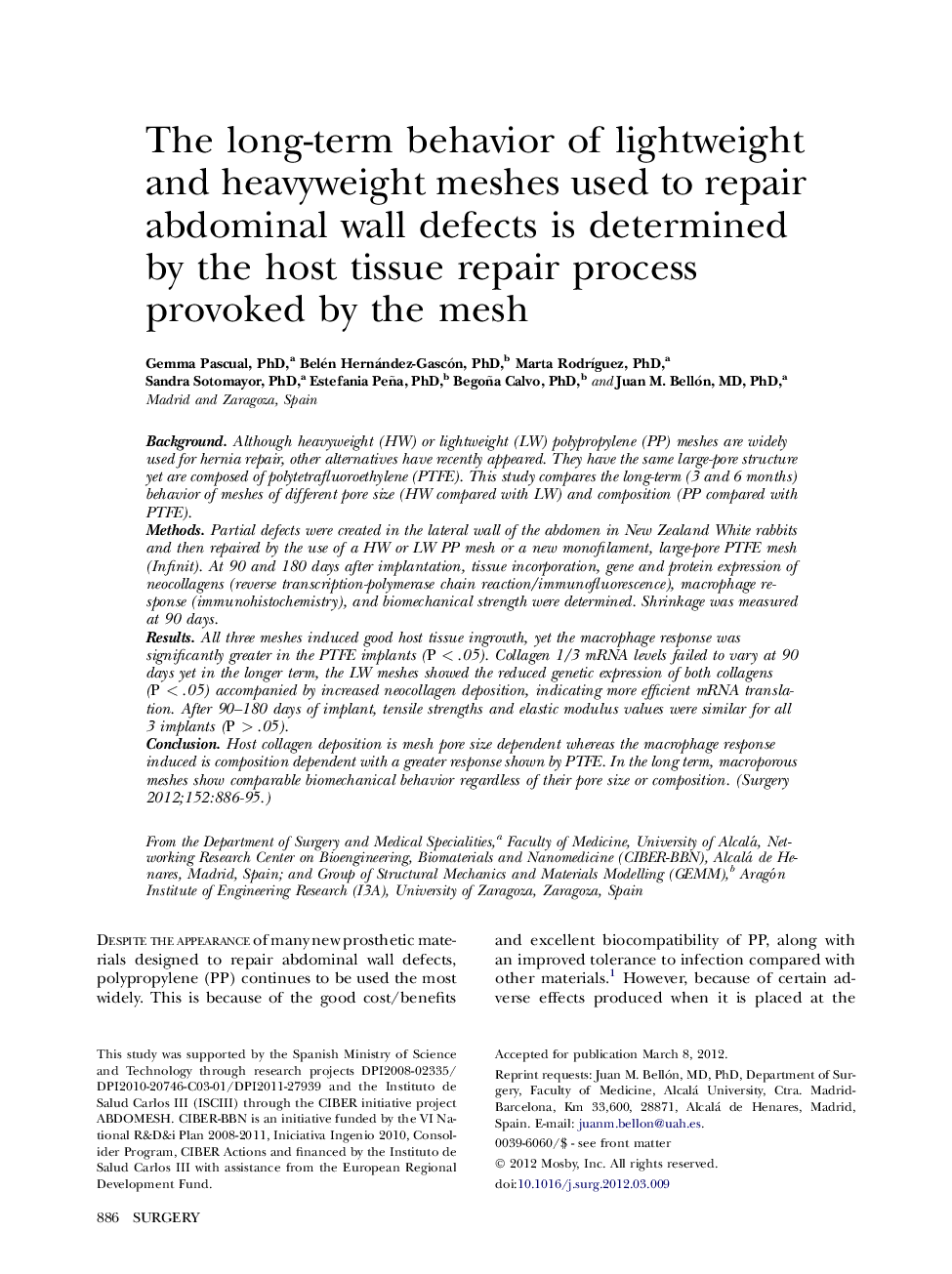| Article ID | Journal | Published Year | Pages | File Type |
|---|---|---|---|---|
| 4307251 | Surgery | 2012 | 10 Pages |
BackgroundAlthough heavyweight (HW) or lightweight (LW) polypropylene (PP) meshes are widely used for hernia repair, other alternatives have recently appeared. They have the same large-pore structure yet are composed of polytetrafluoroethylene (PTFE). This study compares the long-term (3 and 6 months) behavior of meshes of different pore size (HW compared with LW) and composition (PP compared with PTFE).MethodsPartial defects were created in the lateral wall of the abdomen in New Zealand White rabbits and then repaired by the use of a HW or LW PP mesh or a new monofilament, large-pore PTFE mesh (Infinit). At 90 and 180 days after implantation, tissue incorporation, gene and protein expression of neocollagens (reverse transcription-polymerase chain reaction/immunofluorescence), macrophage response (immunohistochemistry), and biomechanical strength were determined. Shrinkage was measured at 90 days.ResultsAll three meshes induced good host tissue ingrowth, yet the macrophage response was significantly greater in the PTFE implants (P < .05). Collagen 1/3 mRNA levels failed to vary at 90 days yet in the longer term, the LW meshes showed the reduced genetic expression of both collagens (P < .05) accompanied by increased neocollagen deposition, indicating more efficient mRNA translation. After 90–180 days of implant, tensile strengths and elastic modulus values were similar for all 3 implants (P > .05).ConclusionHost collagen deposition is mesh pore size dependent whereas the macrophage response induced is composition dependent with a greater response shown by PTFE. In the long term, macroporous meshes show comparable biomechanical behavior regardless of their pore size or composition.
